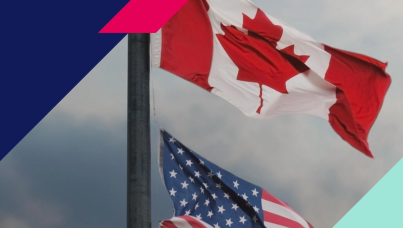McGuinty's Liberals (49%) Lead Eves' Conservatives (37%) In Ontario Voter Support, With Hampton's NDP (13%) Trailing
Toronto, ONTARIO - According to the a new Ipsos-Reid/Globe and Mail/CFTO/CFRB poll released today, conducted shortly after Premier Eves and his cabinet were sworn in on April 15th, Dalton McGuinty's Liberals (49%) lead the provincial Progressive Conservatives led by Ernie Eves (37%) and Howard Hampton's New Democratic Party (13%) in voter support in the province.
When asked who would make the best Premier of Ontario, however, the incumbent Premier, Ernie Eves (39%) outdistances his rivals Dalton McGuinty (27%) and Howard Hampton (13%). A significant minority, one-in-five (21%), say they do not know which of the three would make the best Premier of the province. These levels are similar with the results of a poll conducted in December 2000 (Harris: 43%; McGuinty: 26%; Hampton: 14%; Don't know: 17%) when this question was asked.
The selection of Ernie Eves as the new Progressive Conservatives leader appears to have possibly shaken loose a total of one-in-ten (11%) other currently committed voters (Liberals 12% and NDP 7%), who say that they are "more likely" to vote for the Tories with Ernie Eves as leader. If all of these soft supporters of the Liberals and NDP shifted away from their current position to the Eves' Conservatives it could produce a potential electoral scenario of a virtual tie between and the Conservatives (44%) and the Liberals (43%).
These are the findings of an Ipsos-Reid/CTV/Globe and Mail poll conducted between April 18th and April 28th, 2002. The poll is based on a randomly selected sample of 1,000 adult Ontarians. With a sample of this size, the results are considered accurate to within 177 3.1 percentage points, 19 times out of 20, of what they would have been had the entire adult Ontario population been polled. The margin of error will be larger within regions and for other sub-groupings of the survey population. These data were statistically weighted to ensure the sample's regional and age/sex composition reflects that of the actual Ontario population according to the 1996 Census data.
McGuinty's Liberals (49%) Lead Eves'Conservatives (37%) In Ontario Voter Support, With Hampton's NDP (13%) Trailing
Dalton McGuinty's Liberals (49%) lead the provincial Progressive Conservatives led by Ernie Eves (37%) and Howard Hampton's New Democratic Party (13%) in decided voter support in the province.
- Regionally, support for the Liberals is consistent across all regions of the province, with a slightly higher level of support recorded in the Hamilton/Niagara region (52%), and a slightly lower level recorded in the `905' Belt (47%).
- Higher support for the Liberals is found among younger voters (56% versus 41% of older voters), lower income households (55% versus 44% of higher income households) and women (54% versus 44% of men).
- As for the governing Conservatives, they receive higher support in the `905' Belt (42%), and Eastern Ontario (41%), and lower support among voters in Southwestern Ontario (36%), Hamilton/Niagara (34%), City of Toronto (34%), and Northern Ontario (33%).
- Demographically, Conservative support is stronger among older (44% versus 30% of younger) voters, those in higher income households (44% compared to 34% of middle and 27% of lower income households). Men (43%) are more likely to favour the Conservatives then women (30%).
- Regionally, support for the third place NDP is strongest in Northern Ontario (19%) and the City of Toronto (18%), while it is lowest in Eastern Ontario (11%), the Southwest (10%) and the `905' Belt (10%).
- Higher support for the NDP is found among middle aged (15% versus 11% of older) voters, middle income households (15% versus 11% of higher income households) and women (15% versus 11% of men).
However, Eves (39%) Tops McGuinty (27%) and Hampton (13%) As To Who Would Make Best Premier
As for who would make the best Premier, the incumbent titleholder, Ernie Eves (39%) outdistances his rivals, Dalton McGuinty (27%) and Howard Hampton (13%), on this measure. A significant minority, one-in-five (21%), say they do not know which of the three would make the best Premier of the province.
- Premier Eves receives his highest level of support in the `905' Belt (50%), and his lowest in Eastern Ontario (33%). Demographically, Eves polls higher among older (45%) voters, those with higher household incomes (45%) and men (44%).
- Liberal leader Dalton McGuinty polls highest in Eastern Ontario (35%), where in fact he receives slightly higher support than does Ernie Eves (33%). McGuinty's lowest level of support occurs in the North (22%), Hamilton/Niagara (21%), and the `905' Belt (21%). Younger (29%) and middle aged (28%) voters are more likely to say McGuinty would make the best Premier than older (22%) voters.
- Howard Hampton receives higher support among those in Northern Ontario (20%) and the least support among `905' Belt (9%) residents. Ontarians in the lowest income households (18%) are more likely to choose Hampton as the best possible Premier than those in middle (14%) or higher (10%) income households.
These levels are similar with the results of a poll conducted in December 2000 (Harris: 43%; McGuinty: 26%; Hampton: 14%; Don't know: 17%) when this question was asked.
11% of Decided Voters (Liberals 12%/NDP 7%) Willing to Take a Look at the "New" Tories
The selection of Ernie Eves as the new Progressive Conservatives leader appears to have possibly shaken loose a total of one-in-ten (11%) currently committed voters -- Liberals (12%) and NDP (7%) supporters -- who say that they are "more likely" to vote for the Tories with Ernie Eves as leader. Fifteen percent of both Liberal and NDP supporters say they are "less likely" to vote for the Conservatives, while seven-in-ten (70%) of decided Liberal and NDP voters indicate that the selection of Ernie Eves does not make a difference to their voting intention.
- Of current decided voters that say they are "more likely" to consider voting for Ernie Eves Conservatives, they are more likely to be older (15%) Liberal and NDP current supporters.
- Regionally, these possible soft supporters or "swing" voters are more likely to be located in the City of Toronto (14%), Hamilton/Niagara (14%), Southwestern Ontario (13%) and the `905' Belt (12%) and least likely in the East (8%) and the North (4%).
To view the complete release and detailed tables, please open the attached PDF files.
-30-
For more information on this news release, please contact:
John Wright
Senior Vice-President
Public Affairs
Ipsos-Reid
(416) 324-2900



